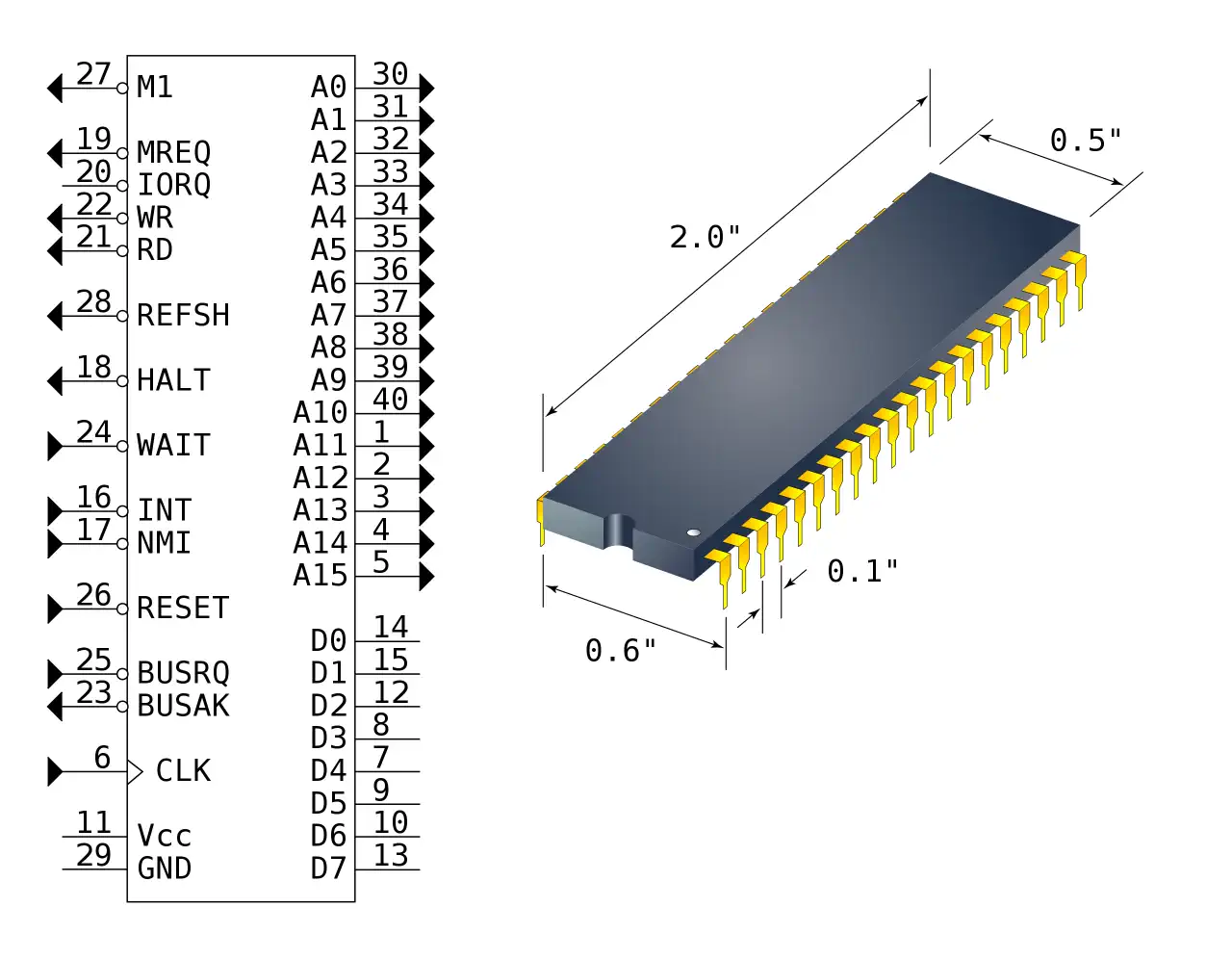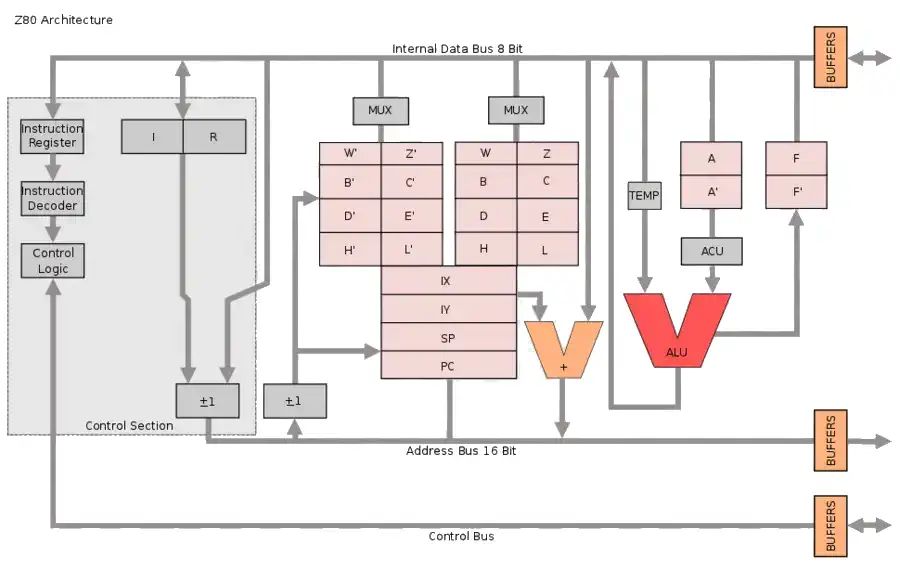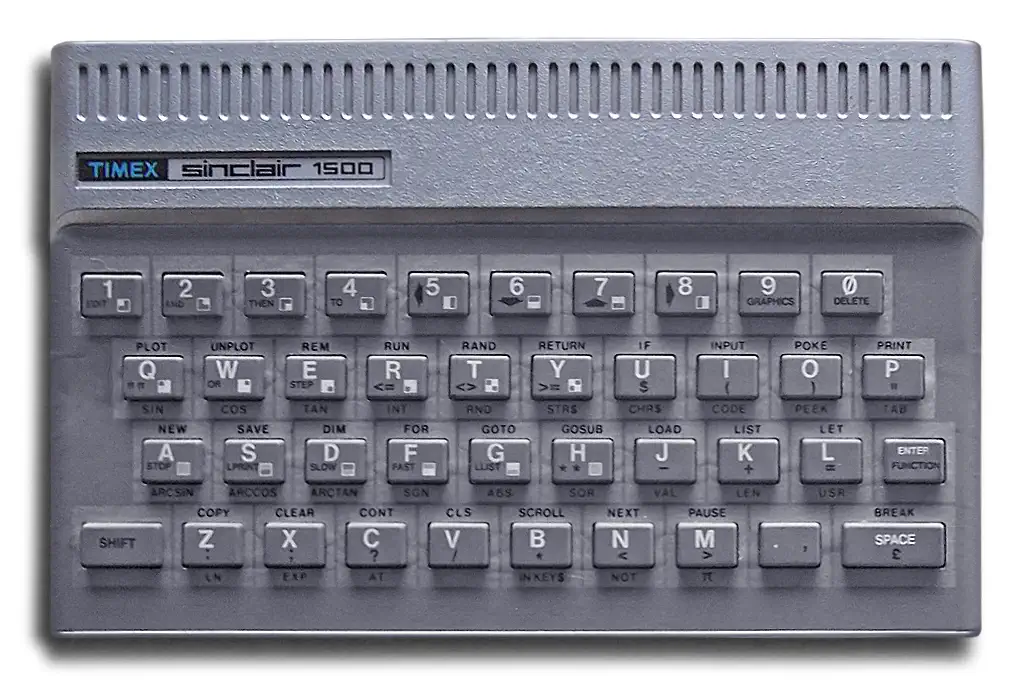Introduction
The Timex Sinclair 1500 was a stop-gap product intended to keep consumers interested in Timex computers until it could launch the TS2068. Announced May 17, 1983, it was a redesigned TS1000 with 16K RAM built in using the case and keyboard of the Sinclair ZX Spectrum. Timex expected to launch the computer in July but manufacturing delays pushed the actual launch back to September. The TS1500 was manufactured at the Timex plant in Portugal. The initial retail price was $79.99. Timex lowered the retail price of the 1000 to $49.95.
Timex introduced a cartridge accessory (the 1510) and a few cartridges to help the TS1500 compete against video game systems and other computers with cartridge systems. The cartridge instant load feature introduced a bug in the 1500. Cartridge-based software was expected to sell for between $13 and $30, depending on the complexity of the program. Hardware Changes The TS1000 circuit board was redesigned to fit the ZX Spectrum case and keyboard connectors. At the same time, the Ferranti ULA present in the ZX81 and TS1000 was replaced with a 68-pin custom logic chip, produced by NCR, that required less power. That reduced the overall heat output when compared to the ZX81/TS1000.
Other changes included:
- ROM properly decoded to the lowest 8K, eliminating the “ghost” images.
- Expandable to 32K RAM with some 16K RAM packs
- Key-selectable TV channel
The Sinclair Timex User Group of the Boston Computer Society reported in its newsletter that Timex claimed the 1500 would have “8-bit bank switching to give 64 megabytes of addressability.” A few POKEs are required for the system to recognize additional RAM. Not all RAM modules would work with the 1500. The rearranged power and cassette connectors prevented longer units like Memotech’s from properly connecting to the computer. Even with an extender card, a number of RAM packs would not work because Timex changed a signal on the edge connector.
While Timex fixed some of the bugs in the 1000 ROM, it introduced some new ones:
- LOAD failures jumped to the middle of an instruction in the initialization at 03e5h, corrupting memory and/or crashing.
- The cartridge check routine assumed no RAM at 2000h and could crash if there was a 1 at that memory location.
- A very long program (approx 16K) would push the display file to 32767 and the computer would think it was out of memory, even if a RAM pack was installed.
The 1500 was used in various educational programs, but failed to garner a large public following.
Zilog Z80 CPU Family
The Z80 quickly became popular in the personal computer market, with many early personal computers, such as the TRS-80 and Sinclair ZX80, using the Z80 as their central processing unit (CPU). It was also widely used in home computers, such as the MSX range, SORD, and the Amstrad CPC, as well as in many arcade games. Additionally, it was also used in other applications such as industrial control systems, and embedded systems. The Z80 was widely used until the mid-1980s, when it was gradually replaced by newer microprocessors such as the Intel 80286 and the Motorola 68000.
The Z80 microprocessor was developed by Zilog, a company founded by Federico Faggin in 1974. The Z80 was released in July 1976, as a successor to the Intel 8080. It was designed to be fully compatible with the 8080, but also included new features such as an improved instruction set, more powerful interrupts, and a more sophisticated memory management system.
The Z80 quickly became popular in the personal computer market, with many early personal computers, such as the TRS-80 and Sinclair ZX80, using the Z80 as their central processing unit (CPU). It was also widely used in home computers, such as the MSX range, SORD, and the Amstrad CPC, as well as in many arcade games. Additionally, it was also used in other applications such as industrial control systems, and embedded systems. The Z80 was widely used until the mid-1980s, when it was gradually replaced by newer microprocessors such as the Intel 80286 and the Motorola 68000. The design was licensed to Synertek and Mostek as well as the European SGS.
The Z80s instruction set is binary compatible with the Intel 8080, so that 8080 code such as the CP/M Operating System and Intel's PL/M compiler for the 8080 can run unmodified on the Z80. The Z80 had many enhancements over the 8080 such as 16-bit data movement instructions, block copy and block I/O instructions, single bit addressing of all registers, IX/IY offset registers, better interrupt system and a complete duplicate register file for context switching during an interrupt.
Source: WikiPedia

RAM max: 16kB Sound Chip none Sound no sound Display Chip none Display 32x24 text, 64x44 pseudo graphics (using block characters) Best Text 32x24 Best Color monochrome Best Graphics 64x44 pseudeo graphics Sprites none System OS Sinclair BASIC Storage External Tape Original Price $79.99

